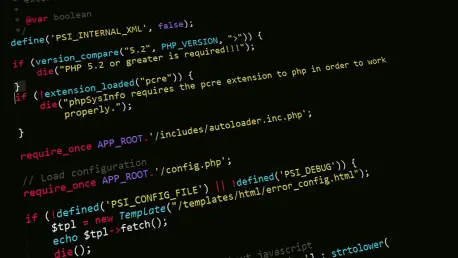The integration of artificial intelligence in the software industry represents a significant shift, demonstrating immense potential for transforming coding processes. In recent years, AI’s involvement in coding has surged, allowing developers to enhance productivity and efficiency. With mastery over AI tools, developers can reshape their coding practices, achieve greater success, and stay competitive in an evolving technological landscape. This guide will help developers unlock AI’s full potential, offering strategies and insights necessary for seamless integration.
Unleashing AI’s Potential in Software Development
The growing influence of artificial intelligence in coding cannot be understated. AI has steadily integrated into software development, empowering developers with tools that facilitate coding tasks, automate processes, and predict potential pitfalls. Strategic AI integration in the development workflow is crucial for optimizing AI benefits. With AI’s thoughtful application, developers can enjoy enhanced code quality and accelerated project timelines, all while maintaining superior efficiency.
To maximize AI’s offerings, developers should adhere to recommended steps that encompass mastering AI prompting, balancing automation with human oversight, selecting suitable tools, embracing iterative development, and optimizing data provision. These strategies uncover significant benefits such as streamlined workflows, improved code performance, and cost-effective solutions.
The Evolution of AI in Coding: A Historical Perspective
The evolution of AI tools in software development spans several years, marked by significant technological advancements enabling AI adoption. Early AI models focused mainly on automatic code generation and debugging, providing basic functions that have since expanded into complex, adaptive systems. As AI algorithms improved, coding assistants became capable of performing diverse tasks, enhancing software developers’ capabilities across projects.
Industries have shifted profoundly over the years due to AI’s impact, urging developers to adapt or risk falling behind technologically proficient peers. Software development has increasingly emphasized collaboration between human and AI elements, reflecting a transformation that has encouraged developers to embrace AI tools and rethink traditional coding paradigms.
Strategies to Enhance AI-Driven Coding Practices
Step 1: Mastering the Art of AI Prompting
Developers should first focus on learning effective communication techniques with AI systems. Prompting involves delivering specific, structured inputs that guide AI’s actions during coding tasks. By understanding techniques such as meta-prompting, one-shot prompting, and prompt chaining, developers can create tailored workflows that enhance AI output quality.
Clear contextual and domain-specific prompts ensure that AI-generated solutions fit developers’ project criteria, reducing errors and boosting efficiency. Implementing well-structured prompts helps align AI responses with project goals and improves the relevance and accuracy of suggested code functions.
Step 2: Balancing Human Oversight and AI Automation
While AI automation can handle various repetitive coding tasks, maintaining human oversight facilitates quality assurance. Developers must identify tasks suitable for AI automation, such as unit testing, documentation generation, or simple code fixes. Strategic automation allows developers to reserve time for complex problem-solving or unique coding challenges that require human expertise.
Human review of AI-generated code is necessary for spotting potential bugs or ensuring adherence to design standards. Manual checks serve as security layers, safeguarding against unforeseen AI errors while maximizing code quality.
Step 3: Choosing the Right AI Tools and Models
Selecting appropriate AI tools and models proves critical to developmental success. Developers should evaluate tools based on their specific needs, capabilities, and project budgets. Models like OpenAI’s Codex or Anthropic’s Claude offer varying strengths and cost implications. Understanding which model aligns best with project goals helps optimize AI performance.
Continually assessing cost-effectiveness ensures developers balance performance requirements with budget constraints. Careful tool selection aids developers in maintaining competitive advantages while safeguarding project finances.
Step 4: Embracing Iterative Development and Testing
An incremental approach to AI-driven development and testing proves advantageous. Developers should adopt iterative testing practices, focusing on small-scale code changes and regular assessments. This minimizes errors and misoptimization risks inherent in AI-generated code.
Avoiding common pitfalls requires cautious validation and controlled rollout processes. Detailed testing ensures AI contributions align with expected outcomes, preventing unexpected deletions or logic discrepancies.
Step 5: Enhancing Data Access and Information Context
Optimized data access improves AI outcomes, enhancing accuracy and decision-making capabilities. Developers should supply AI systems with ample contextual data and structured documentation. Adequate data provision enables AI to make informed decisions, aligning actions with project parameters.
Leveraging open-source models offers developers greater flexibility, allowing customization and adaptation of AI systems based on unique project requirements. Open-source options facilitate collaboration and foster innovation in AI integration processes.
Proceeding with Confidence: Key Takeaways
Developers should prioritize mastering AI prompting techniques to ensure meaningful communication with AI systems. Balancing automation with human oversight is critical for maintaining quality assurance. Choosing appropriate AI tools and models requires evaluating both their capabilities and cost-effectiveness. Adopting iterative development and testing helps prevent pitfalls, while enhancing data access optimizes AI decision-making processes. These strategic steps collectively ensure successful integration of AI in coding practices.
The Future of AI in Coding: Trends and Implications
Current trends indicate AI’s increasing influence within software development, pointing toward breakthroughs in AI-driven coding processes. As AI models become more sophisticated, developers and businesses must navigate challenges such as maintaining code security, managing unpredictability, and ensuring ethical AI usage.
AI coding implications span various industries, presenting opportunities for improved efficiency and innovation in fields like healthcare, finance, and education. Positive adaptation of AI tools will further enable companies and developers to expand their technological prowess and take full advantage of AI systems.
Conclusion: Embracing AI for a Bright Coding Future
The transformative potential of artificial intelligence in coding is undeniable, urging developers to leverage AI tools effectively. Reflecting on the strategic approaches highlighted, future developers can enrich their coding practices and embrace a collaborative dynamic between AI systems and human expertise. Integrating best practices in AI-assisted coding supports balanced innovation, empowering proficient developers to navigate a rapidly evolving technological landscape.









